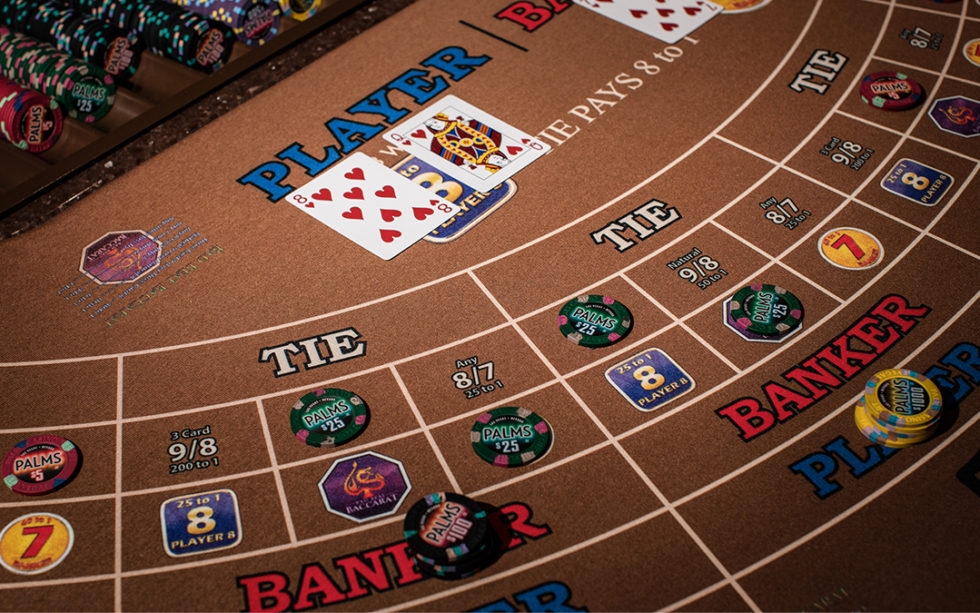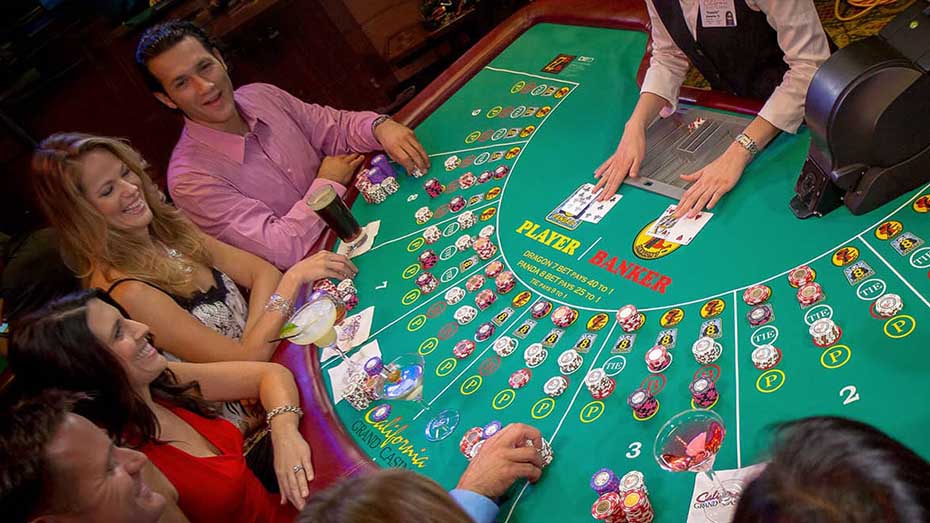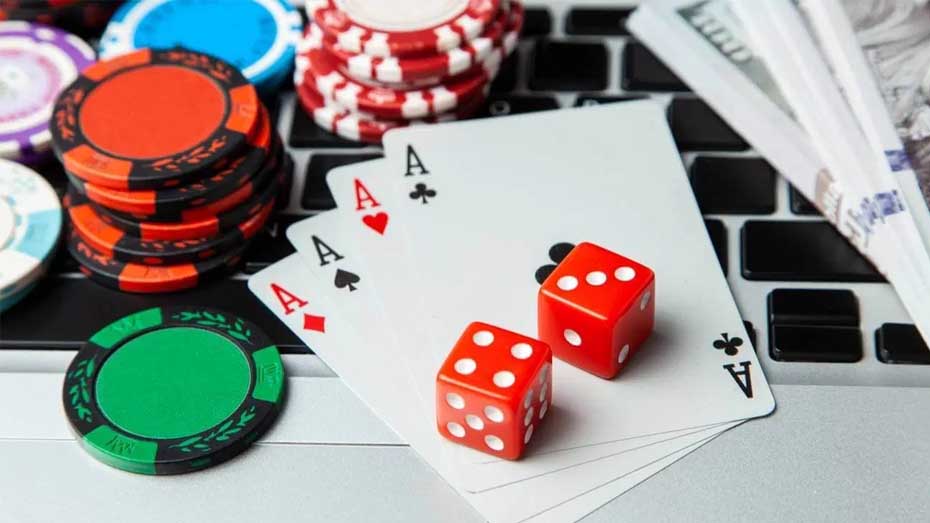
Delve into the captivating world of Baccarat, a renowned card game embraced by casinos worldwide. Its essence lies in predicting which hand, the Player’s or the Banker’s, will reach the closest total to 9. Let’s 24hscore embark on a journey through this exhilarating game:
The Enigmatic Table
In the realm of Baccarat, the table serves as the epicenter of excitement. Depending on the Baccarat variant, it accommodates a varying number of players, ranging from 7 to 14, alongside the dealer’s domain. Despite the player count, only two hands are dealt—the Player’s and the Banker’s—while each player possesses their distinct betting area without receiving individual cards.
Trio of Betting Arenas
Baccarat unfolds across three primary betting arenas, each offering distinct prospects for players:
The Tie:
A focal point on the table’s heart, the Tie beckons players to wager on the rare possibility of both the Player and Banker concluding with equal values. Placing chips here signifies the anticipation of a harmonious tie when both hands match at the round’s culmination.
The Banker:
Nestled on one side of the table, the Banker’s domain beckons those who fancy betting on the Banker’s triumph. Unlike a representation of the house or dealer, the Banker’s hand stands independently, boasting marginally higher odds of success owing to specific game rules.
The Player:
Mirroring the Banker, the Player’s area resides on the opposite side, inviting bets on the Player’s victorious outcome. Notably, “Player” doesn’t pertain to an individual player at the table but signifies one of the pivotal hands in the game.
Strategic Wagers
In the realm of Baccarat, players exercise their strategic acumen by choosing among these three areas to place their bets, each representing a distinct game outcome—whether a tie, Banker’s conquest, or Player’s triumph.
The Dealer’s Role
As the game commences, the dealer assumes the pivotal role of card distribution. Stationed at the table’s center, facing the players, the dealer enjoys unhindered access to all corners, facilitating an immersive gaming experience.
Commission Dynamics
Successful bets on the Banker’s hand incur a 5% commission for the dealer. In some iterations, a rectangular commission box tracks all such proceeds adjacent to the bank, while other tables sport commission circles adjacent to betting areas. Each commission incurred by a player is duly marked until settlement, with each number denoting a distinct player.

A Comprehensive Walkthrough of Baccarat
Enter the enthralling realm of Baccarat with a step-by-step guide, unraveling its fundamental rules, nuances in card values, diverse betting options, and the art of identifying the triumphant hand. Armed with this knowledge, you’ll confidently embrace the thrill of Baccarat gameplay at any casino.
Choosing a Hand
In the realm of Baccarat, the pivotal decision lies in selecting which hand to favor—Player or Banker. Here’s a guide on making that crucial choice:
Analyzing Odds:
Before placing your bet, consider the odds affiliated with each hand. Typically, the Banker bet boasts a marginally lower house edge than the Player bet, indicating a higher probability of success. However, bear in mind the casino’s usual 5% commission on Banker bet winnings, slightly affecting the overall payout.
Pattern Evaluation:
Some enthusiasts seek patterns or streaks in Baccarat outcomes as a strategy. Yet, it’s vital to understand that Baccarat hinges on chance, rendering each hand independent of its predecessors. Relying solely on perceived patterns isn’t a foolproof strategy and warrants cautious consideration.
House Rules and Variations:
Different casinos may introduce unique rules or variations in Baccarat gameplay. Familiarize yourself with the specific regulations and payout structures of the game before placing your wager. Variants might introduce diverse side bets, altering risk-reward dynamics.
Understanding Card Dealing
In Baccarat, card dealing adheres to distinct rules governing gameplay. Here’s an insight into how cards are dealt during the game:
Initial Dealing:
Commencing the game, the dealer deals two face-up cards to both the Player and Banker. Typically, the Player’s hand receives cards first, followed by the Banker’s. Should either hand attain a natural (a total of 8 or 9) with these initial cards, the round concludes, and the natural hand triumphs.
Drawing Additional Cards:
In scenarios where neither the Player nor the Banker obtains a natural and their initial two-card totals fail to meet specific criteria, a third card might be drawn based on predefined rules. The rules for drawing a third card are contingent upon the values of the initial two cards and follow distinct guidelines for each hand.
Final Hand Comparison
Upon drawing any requisite third cards, the Player’s and Banker’s hands undergo scrutiny to ascertain the victor. The hand closer to a total of 9 claims victory. A Tie ensues if both hands achieve an identical total.
Points Calculation
Understanding the intricacies of point totals in Baccarat is pivotal:
Card Values:
Assigning specific values to each card is imperative:
- Numbered cards (2-9) retain their face value.
- 10s and face cards (King, Queen, Jack) hold no point value.
- Aces are valued at 1 point.
Calculating Hand Totals:
Hand totals are the sum of individual card values, yet only the final digit is considered. For instance:
- A hand comprising a 5 and an 8 tallies 13, but the actual value is 3, discarding the initial digit.
Maximum Point Total:
The highest attainable total in Baccarat is 9. If a hand’s total exceeds nine, only the second digit holds significance.
Comprehending Game Rules
Baccarat typically employs 6 to 8 decks of standard 52 cards. After shuffling, the game kicks off with the placement of bets.
Betting Options
The three primary betting avenues in Baccarat encompass Player, Banker, and Tie, each offering distinct prospects of victory.
Dealing Cards and Drawing of Third Cards
The dealer initially deals two cards to both the Player and Banker. Additional card drawing follows specific rules as predetermined for each hand.
Comparison of Hands
After any essential third cards are drawn, hand comparison decides the winner based on proximity to a total of 9. A Tie occurs if both hands reach an identical total.

Payouts
-
If you bet on the Player and win, you are paid even money (1:1).
-
If you bet on the Banker and win, you are paid slightly less than even money due to the house commission (usually around 5%).
-
If you bet on a Tie and win, you are paid at predetermined odds, often 8 to 1 or 9 to 1.
Additional Rules
Baccarat may have variations in rules and side bets depending on the specific casino or version of the game being played. It’s important to familiarize yourself with the house rules before playing.
Calculate the winning hand.
To calculate the winning hand in Baccarat, you need to determine which hand, the Player or Banker, has a total closest to 9. Here’s how to calculate the winning hand:
Add up the Card Values
Start by adding up the values of the individual cards in each hand. Remember that numbered cards (2-9) retain their face value, 10s and face cards (King, Queen, Jack) are worth 0 points, and Aces are valued at 1 point.
Consider the Last Digit
If the total value of a hand exceeds 9, only the last digit is taken into account. For example:
-
If a hand has a six and a 7, the total is 13. However, the hand’s value is 3, as the first digit is dropped.
-
If a hand has a nine and a 7, the total is 16. In this case, the hand’s value is 6, as the first digit is again dropped.
Compare the Hand Totals
After calculating the hand values, compare the totals of the Player’s and Banker’s hands. The best hand is the one with the nearest total to 9. If both hands have the same total, it results in a Tie.
Natural Wins
A “natural” win occurs when either the Player or the Banker is dealt a total of 8 or 9 with the first two cards. A natural is a sure win, and no more cards are drawn. Unless both hands contain a natural, the hand with the natural wins.
It’s important to note that, as a player, your role is to predict which hand will win rather than calculate the outcome yourself. The calculation of hand totals and determination of the winning hand is carried out by the dealer or the computer program in online versions of the game.

Tips for Playing Baccarat
Here are some tips to help you improve your gameplay in Baccarat:
Understand the rules: Familiarize yourself with the rules of Baccarat before you start playing. Know how the cards are dealt, how the values are calculated, and the different betting options available.
Stick to the basic bets: In Baccarat, there are three main bets you can make: Player, Banker, and Tie. Because the Banker bet has a reduced house edge, it is often seen as the preferable alternative. Avoid the Tie bet since it has a much greater house edge.
Manage your bankroll: Before you start playing, set a budget for yourself and stick to it. Decide on the maximum amount you’re willing to wager and avoid chasing losses. It is critical to wager properly and not go over your predetermined limitations.
Bet consistently: Once you’ve decided on your betting strategy, whether it’s flat betting (betting the same amount each time) or a progressive system, stick to it. Avoid making impulsive or erratic bets based on emotions or recent outcomes.
Don’t fall for the gambler’s fallacy: Baccarat is a game of chance, and each hand is independent of the previous ones. Don’t fall into the trap of thinking that past outcomes influence future results. Avoid betting based on patterns or streaks, as they have no statistical significance in the game.
Avoid excessive side bets: Baccarat may offer additional side bets, such as pairs or specific card combinations. These bets often have high house edges, so it’s generally best to avoid them. For better chances, stick to the big bets.
Take advantage of the commission: When you win a Banker bet, the house usually takes a 5% commission on your winnings. However, some casinos offer reduced commission rates, such as 4% or even 2.75%. Look for these opportunities to increase your overall returns.
Practice with free games: If you’re new to Baccarat or want to refine your skills, try playing free online Baccarat games. This allows you to practice without risking real money and gain a better understanding of the game.
Quit while you’re ahead: Set a winning objective for yourself, and when you achieve it, stop playing. It’s easy to get caught up in the excitement of winning streaks, but it’s important to know when to walk away and enjoy your profits.
Stay focused and have fun: Baccarat is a simple and enjoyable game, so remember to have fun while playing. Avoid distractions, stay focused on the game, and make decisions based on strategy rather than emotions.
Remember that while these tips can help improve your chances of winning, Baccarat is ultimately a game of luck. It is critical to gamble properly and never wager more money than you are able to afford to lose.

In Baccarat, you win by correctly predicting which hand, the Player or Banker, will have a total closest to 9. Place your bet on the hand you believe will win, and if you’re correct, you’ll receive a payout based on the betting option chosen.
The odds of winning depend on the bet you place. The Banker bet has a slightly higher probability of winning, but it comes with a small commission.
Counting cards in Baccarat is generally not effective since the game involves multiple decks, and the cards are shuffled regularly. The outcome of each hand depends on chance rather than the cards’ sequence
Conclusion
Baccarat is a straightforward and exciting card game. The objective is to predict which hand, Player or Banker, will have a total closest to 9. Understanding the rules, card values, and hand evaluation is crucial. Stick to the main betting options and manage your bankroll wisely. Remember to avoid the gambler’s fallacy and enjoy the game responsibly. With practice and a strategic approach, you can have an enjoyable experience playing Baccarat.





